TheGathering will soon be hosting their first Value Vintage event, and I for one could not be more excited. The opportunity to play this format competitively only comes around a few times a year, and this event is sure to be one that you won’t want to miss out on. But what is Value Vintage? You may have heard murmurings about the new up-and-coming format, some new budget format that’s basically just Pauper with extra steps, perhaps, but I’m here today to show off my favorite format, and give you the tour of all things competitive for $30 or less.
I’m Doot, one of the members of the mod team for the official Value Vintage discord. I’ve been playing the format for just over two years, and I am a prolific brewer. We in the community like to call Value Vintage a ‘Brewer’s Paradise’, and I can fully attest to that. However, the format can absolutely be taken seriously as well. This article is meant to guide newer players into the format and get them acquainted with what decks are established as strong, as well as be a strategy guide for those looking to start playing in tournaments or local events.
Value Vintage is just what it sounds like. It’s the Vintage Banned and Restricted list, but your entire deck has to cost $30 USD or less, using TCG Market pricing. It is an officially supported format on Moxfield, and all of the lists provided from this article can be found there. Most of the brewing and building for the format happens there, so if you don’t have an account, now might be a good time to make one!
The format has some seriously strong cards in it. We like to say that the format is pretty close to legacy in terms of power level. People are losing games on turn 2 or 3 to combo decks fueled by Spirit Guides and cascade spells. Control has access to Counterspell, Swords to Plowshares, and a wealth of powerful finishers. Aggro decks are running around with fast mana and the best burn spells ever printed. Black decks have access not only to Dark Ritual but Hymn to Tourach and even Grief. You even get access to one of the best 1v1 mechanics ever developed, the Initiative. Yet, despite all this powerful and broken stuff, the metagame and format remain in a solid place, as of the time of writing.
So, what are people playing in tournaments?
The format may be wide open, but some decks have proven themselves head and shoulders above the rest. For each macroarchetype – Aggro, Midrange, Control, and Combo – I will outline some decks that have really stood out from the crowd and have seen tournament success, as well as a small handful of less successful yet still popular choices that commonly attract many players. These will include decks that could perform very well if the metagame is suited for them, fan favorites from entrenched players, or underexplored decks that are potential powerhouses.
Before making any bold, cementing statements about any sort of Value Vintage metagame, a disclaimer: this format is in no way solved. With the increased printing schedule of new cards and constant brewing from dedicated players, almost anything could crop up out of nowhere and become a force to be reckoned with. If you are the type to brew around and experiment instead of net-decking, go for it! The format is still in its infancy, and with (at time of writing) 29,137 cards that are technically legal in the format, there is an endless variety of decks that you can put together. From that old modern deck you loved 15 years ago to that deranged 12-piece combo your friend uses in Commander, so many decks and strategies are completely viable here. This article is not meant to be an exhaustive list. Who knows, you could be the architect behind the newest hotness of the format.
As a final disclaimer, the decklists provided might be over budget, especially as time progresses from the publication of this article. Some prices being over are easily fixed by either logging into Moxfield or switching your pricing settings. You can also make a duplicate of a deck, then click ‘update to cheapest’ to see how far off the deck is from being legal.
Aggro/Tempo
For the purposes of this article, I’m merging Aggro and Tempo into one section. Tempo in general has a pretty tough time existing in the format, as many cards in modern Magic can single-handedly snatch the tempo of a game away from a deck looking to utilize that playstyle. That said, Tempo is a very burgeoning archetype that is only starting to make its way into the format.
Burn
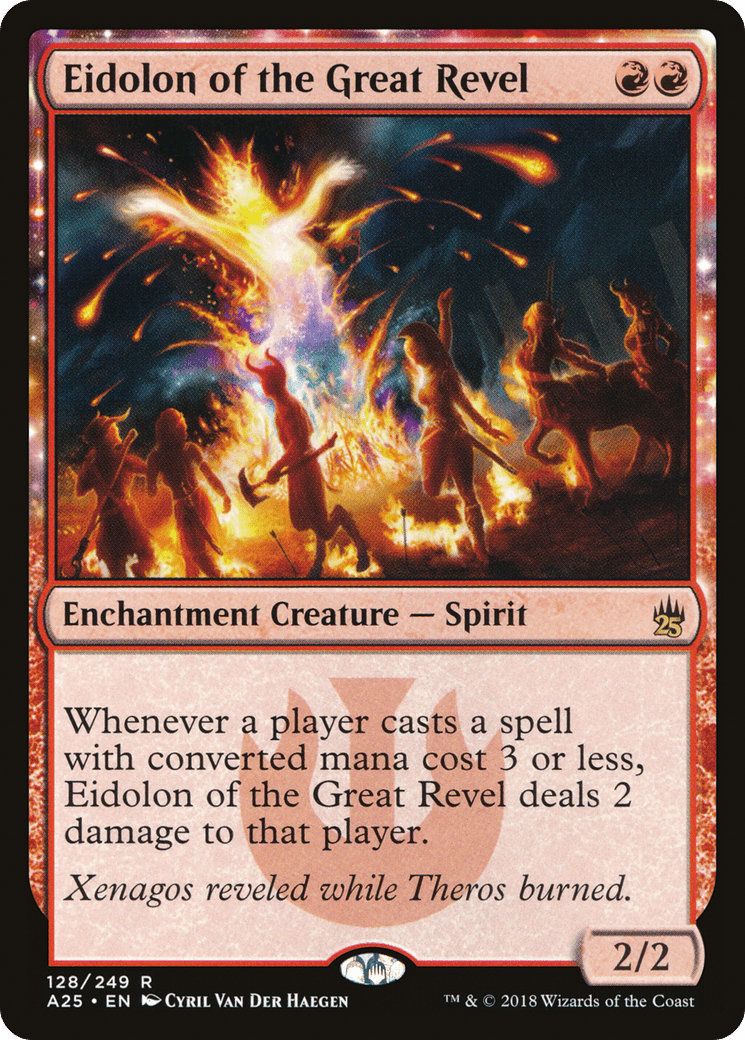
Decklist: https://moxfield.com/decks/4xxf3LRHC0CBGRukmtAhdQ
A common litmus test of a format is that if Burn is playable, the format is good and healthy. Value Vintage’s Burn deck could certainly be described as more than playable, packing all of the classic direct damage spells from across the ages. Utilizing the traditional Legacy creature package of Goblin Guide, Monastery Swiftspear, and Eidolon of the Great Revel, the deck can swiftly reduce the opponent’s life total to zero.
Rhinos / Crashcade
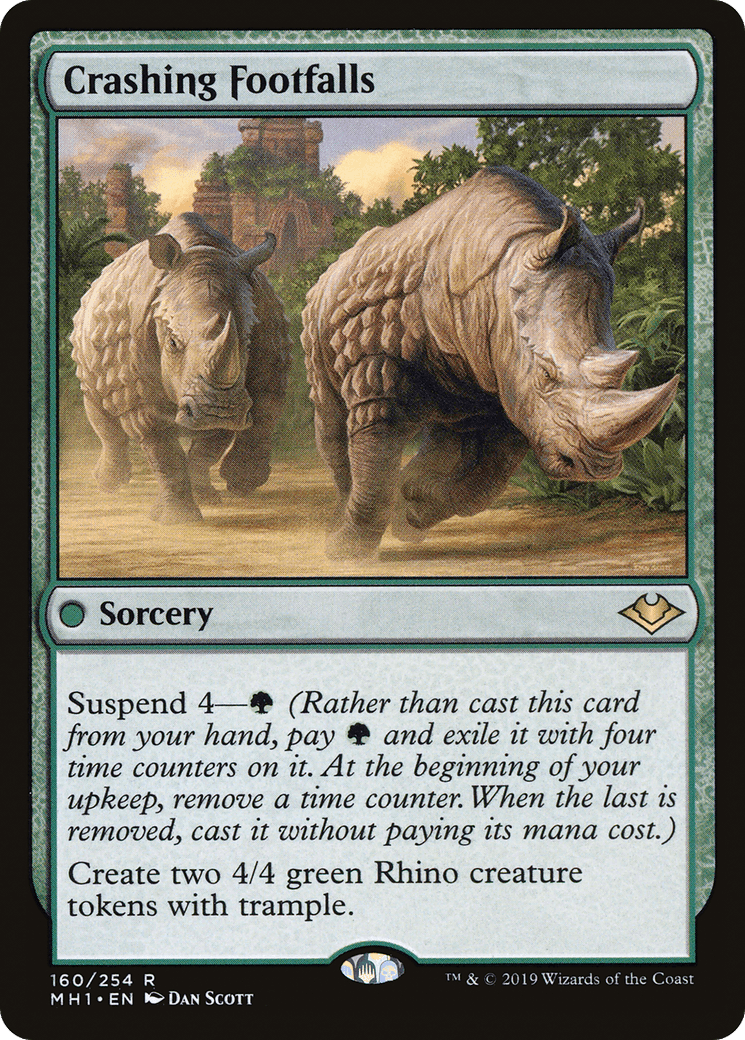
Modeled after the highly successful Modern deck from a couple of years ago, Crashcade (better known simply as Rhinos) is an incredibly powerful option in Value Vintage. The deck’s primary objective is to cast a three mana spell with Cascade, and it is built in such a way that Crashing Footfalls is the only possible result of that. Combining the strength of some free fast mana – Simian Spirit Guide and Elvish Spirit Guide – with the banned-in-modern Violent Outburst, Rhinos can create its namesake tokens as early as turn one. The deck also has access to some of the most powerful planeswalkers ever printed, and can cast an Oko, Thief of Crowns or a Minsc & Boo, Timeless Heroes well ahead of schedule to take over the game on a different axis.
Phoenix

Decklist: https://moxfield.com/decks/B93cbKIzUkCQ9hBERQNlog
With a recent Top 8 at our Star City Games 1K in Charlotte, the Pioneer all-star has cemented its place in the format. It’s all of the cards players know and love from the Pioneer version, but with an extra injection of Vintage spice in Sailor’s Bane, Detective’s Phoenix, and Pyromancer Ascension. Ascension, in particular, can supercharge the deck once set up, as suddenly all of the digging and burn goes twice as hard.
Merfolk

Decklist: https://moxfield.com/decks/GyGdgNeCvUyBPrr0JBs_Cg
Another classic deck in its classic configuration, Merfolk makes its appearance in this format just as The Professor would want it to be. One of the few viable Tempo strategies available (as far as we’ve discovered), Merfolk seeks to use Aether Vial and mana-disrupting strategies to create a mana advantage that prevents the opponent from stopping the aggressive creature swarm. Cards like Spreading Seas and Vodalian Hexcatcher disrupt the opponent’s mana availability while Master of the Pearl Trident and Merrow Reejerey present a quick clock that efficiently closes out a game.
Affinity

Decklist: https://moxfield.com/decks/8JkStIiOC0C1YVLaNHGSbQ
For 20 years, the Affinity mechanic has been a scourge on constructed tournament play, and Value Vintage is no exception. Current iterations of the deck combine aspects of the strategy from each point in its lifespan; from the artifact lands like Seat of the Synod, to the swarming potential of Signal Pest and Vault Skirge, to new consistency pieces that tie the room together like Forging the Anchor and Thought Monitor. The deck encapsulates what many players have loved and hated about the strategy throughout the years, and is as capable as ever of delivering a swift, fatal blow.
Hogaak Roots
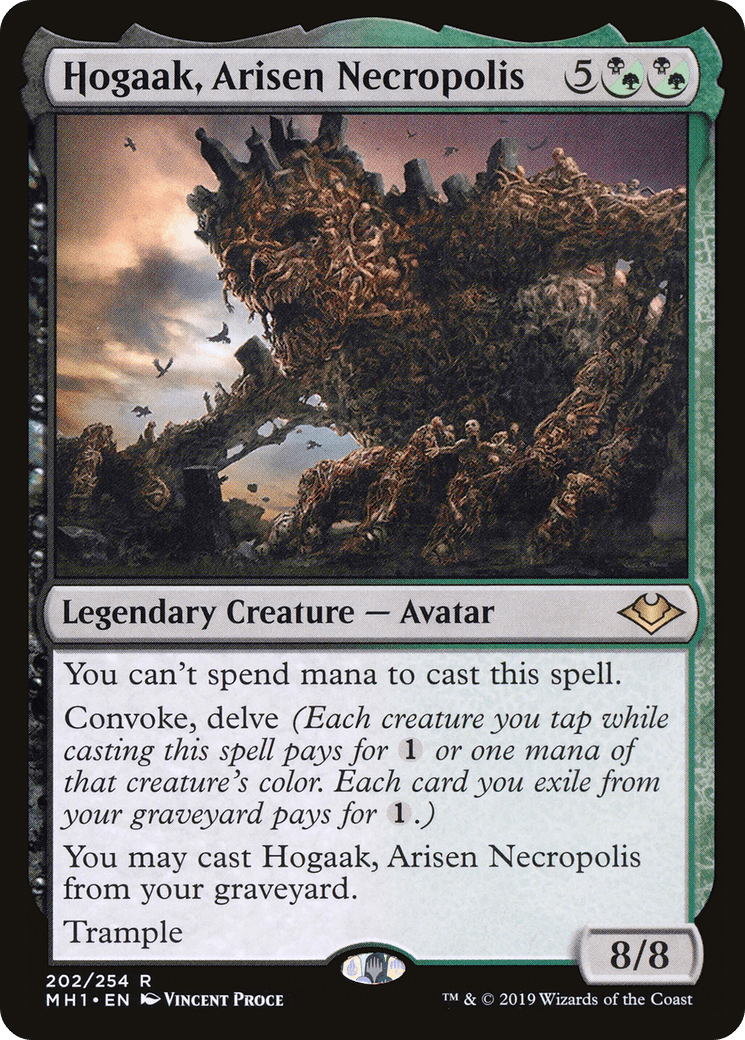
Decklist: https://moxfield.com/decks/BmoHMD7kREG9jrk9k0FT2A
Back from the graveyard of Modern’s banlist, Hogaak lives on in Value Vintage. The printing of Insidious Roots gave the deck a new axis of attack, letting it grind into the later game with a growing army of plant tokens. The past few years have seen the deck also gain a variety of supporting creatures that enable both Roots and Hogaak, along with multi-format all-star Malevolent Rumble, to both fill the graveyard and provide more bodies.
Off-Meta Aggro Decks:
Azorius Spirits: https://moxfield.com/decks/ZlIVez7DS02DmvjpjtgmLA
- A Tempo deck that leverages the power of Aether Vial with interactive creatures to pressure and disrupt the opponent and keep them on the back foot.
Basim Lurrus: https://moxfield.com/decks/TjPl72IWVkyXAtWMwiUf_A
- A Lurrus-enhanced Tempo deck that uses snowballing creatures that care about artifacts to draw cards and present a clock simultaneously.
Midrange
5C Pyre Humans
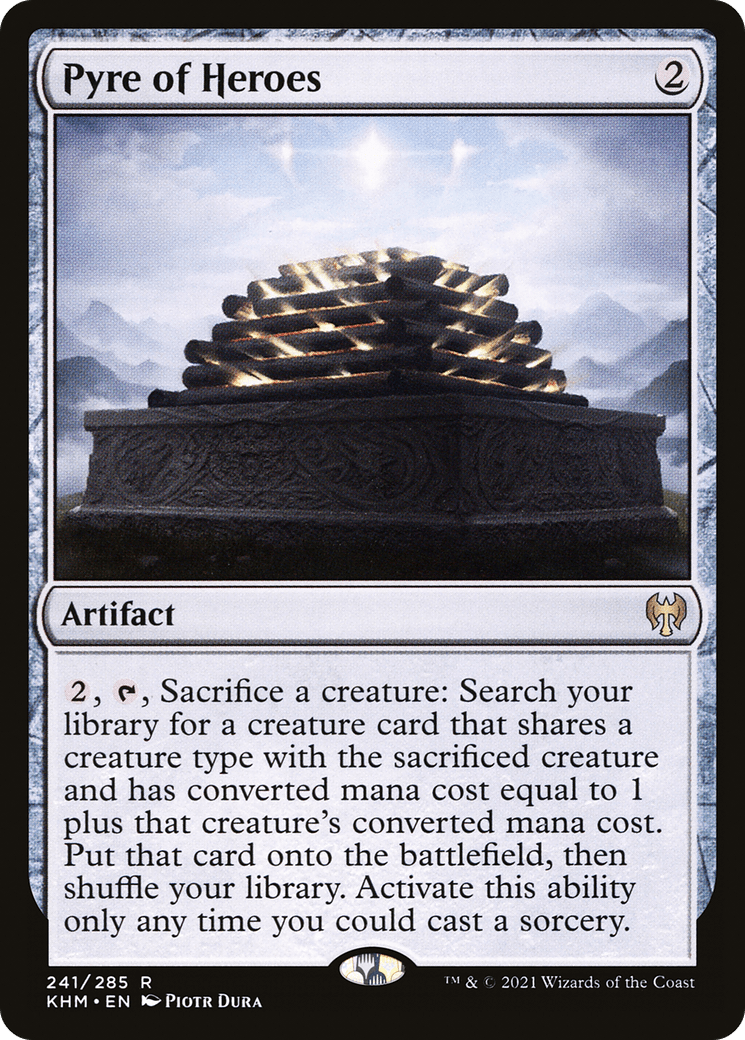
Decklist: https://moxfield.com/decks/SjfSAmGADESfCHkTN9q4pA/
A combination of two classic Modern decks, Birthing Pod and 5-Color Humans, Pyre Humans is the best toolbox-style deck the format has seen as of yet. Utilizing its namesake card, Pyre of Heroes, the deck seeks to search silver bullet hatebears into play. It then turns the corner with one of its wildly powerful four-drops and closes the game. Humans are extremely adaptable, able to go full aggro with Thalia’s Lieutenant, or stay on the defensive with interactive spells like Reflector Mage. The modularity of the deck and wide range of disruptive effects stapled to different searchable creatures allows pilots to tech against either their local metagame or a larger tournament setting with ease.
Rakdos Lurrus
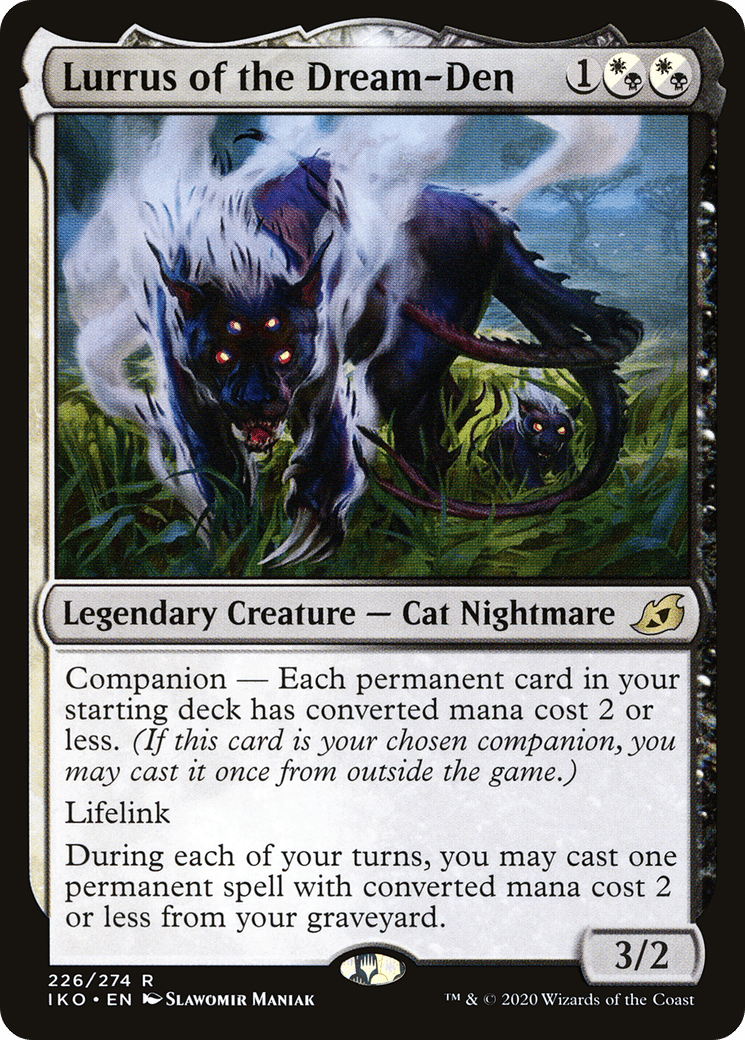
Decklist: https://moxfield.com/decks/ooU0xiibxEqAwxwEMoqQ7A
Rakdos Midrange has become a staple of competitive Magic across all formats, and Value Vintage is no exception. Utilizing all of the best permanents that Lurrus of the Dream-Den can recur that fit the budget, the deck exhibits all of the classic Rakdos Midrange play patterns. Rip the opponent’s hand apart with discard spells, then play strong cards with inherent synergy to dominate the mid and late game. Modern Horizons 3 brought along a powerful new energy-based value package of Amped Raptor, Unstable Amulet, Chthonian Nightmare, and Galvanic Discharge. Though the energy package is a preference among its players, Rakdos Lurrus is one of the most customizable decks in the format, allowing brewers a ton of choice within the loose shell of Lightning Bolt, Inquisition of Kozilek, and Hymn to Tourach.
Initiative shells
The Initiative is one of the most unbalanced mechanics in the game when it comes to 1v1 gameplay. What was meant to be fought over in multiplayer tables has devastated 60-card constructed formats with its ability to take over a game single-handedly once established. Being significantly easier to prevent one player from attacking you and taking the status than three players, The Initiative has easily found its way into several different strategies. While these are currently the top options for giving yourself the powerful status, there are surely many more yet to be discovered.
Gruul:
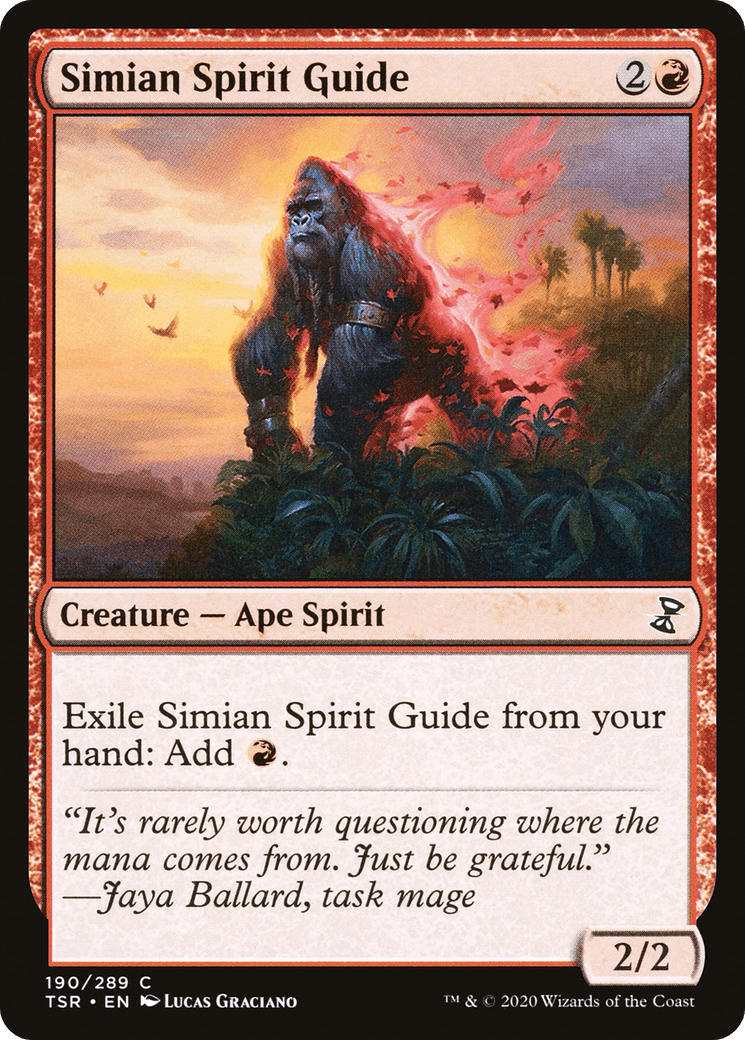
Decklist: https://moxfield.com/decks/mrKulF0kkUCqsOnFShM89Q
Gruul Initiative operates on a similar axis to the Rhinos deck, using both Elvish and Simian Spirit Guide in combination with more traditional mana-producing creatures like Llanowar Elves to push an Initiative creature into play as quickly as possible, as frequently as possible. From there, the deck uses the free resources gained from the status to overwhelm the opponent’s forces before they can catch up.
Orzhov / Mono Black:
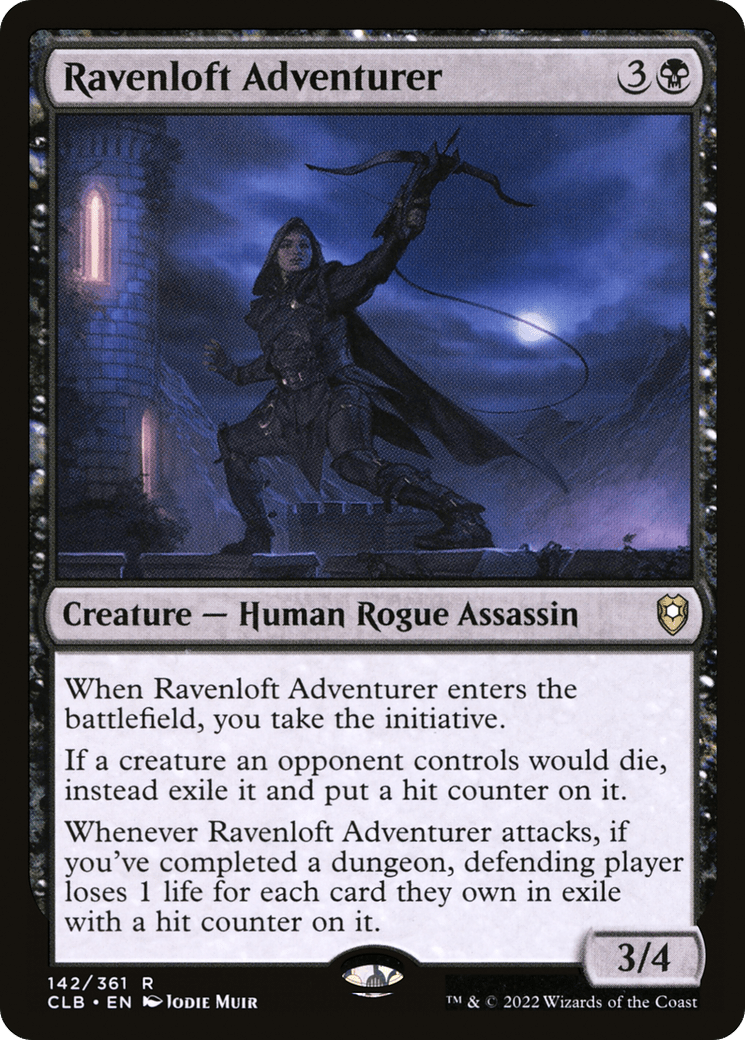
Decklist: https://moxfield.com/decks/xJ-f5273mEadFSWC47_D_w
On the other side of the spectrum, Black based Initiative uses its color’s powerful interactive spells to hold the opponent back and buy time for the status to take over. Inquisition of Kozilek and Hymn to Tourach will throw many decks off balance long enough to allow a Ravenloft Adventurer to resolve and start that snowball effect.
Selesnya:
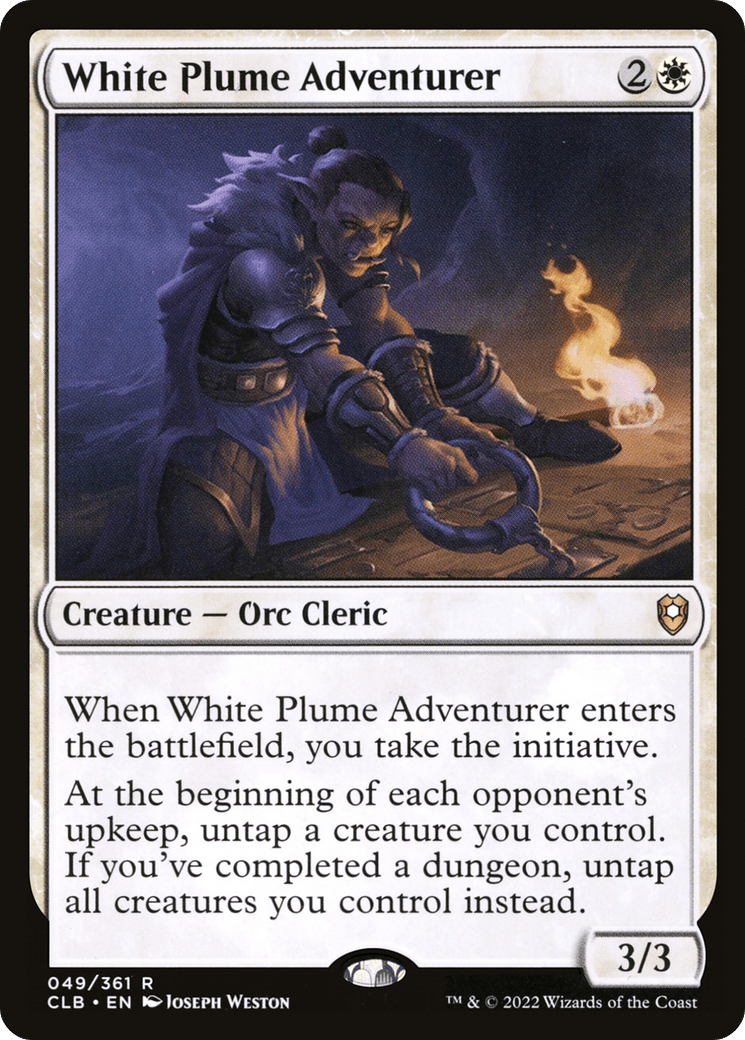
Decklist: https://moxfield.com/decks/4pqn-3nOjEG-1XbCsmrbag
Selesnya Initiative more or less combines both of these ideals, using mana creatures like Avacyn’s Pilgrim and Elvish Mystic to put a White Plume Adventurer or similar into play as early as turn two. It then has the option to pivot to or from White’s taxation ability to throw and keep the opponent off balance, while The Initiative puts you further and further ahead.
Asmoranomardicadaistinaculdacar Shells
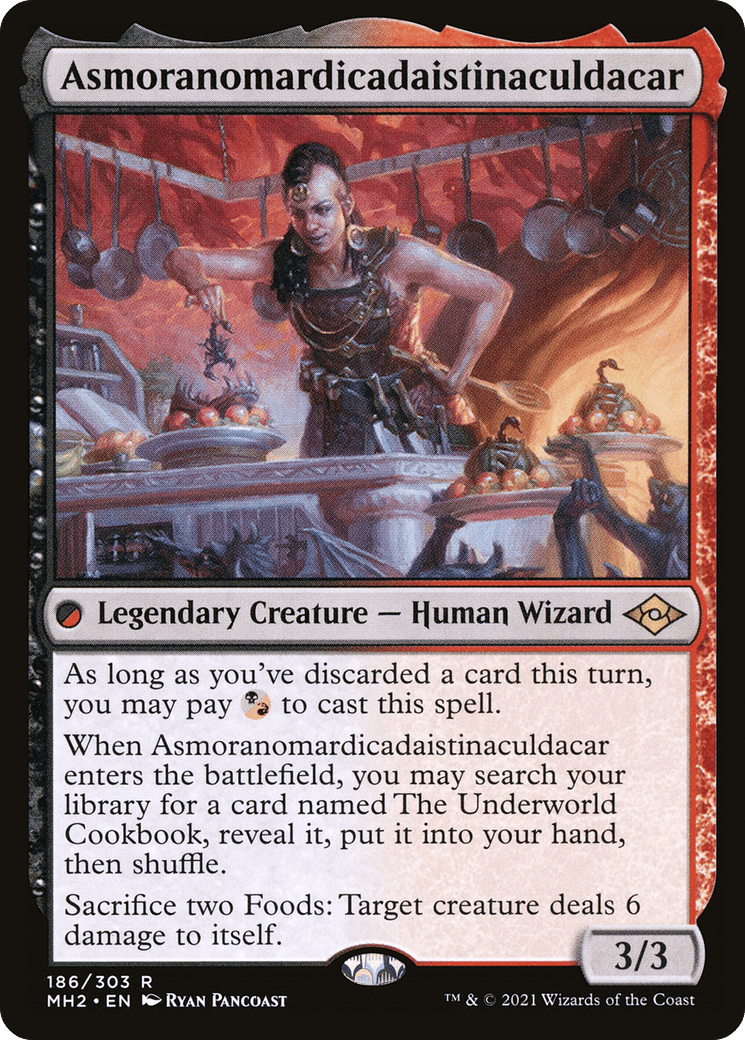
Decklist: https://moxfield.com/decks/MtYnZ0Sslkq3oMfACi4Vqw
Easily the most customizable shell in the format, Asmoranomardicadaistinaculdacar and her weapon of choice – The Underworld Cookbook – form the centerpiece of a myriad of interesting decks. Asmo and the Cookbook together provide a steady stream of both lifegain and creature removal, as well as access to both artifact and graveyard synergies. Pilots have seen success with Boros, Gruul, Rakdos, and Dimir shells, with many more doubtlessly lurking beneath the surface waiting to be discovered.
Off-Meta Midrange Decks:
Jund: https://moxfield.com/decks/i-wojm8WBUumOoEllPo5YQ
- The longtime constructed staple gets a new lease on life, playing some of the most powerful individual cards the colors have access to. Yes, even Bloodbraid Elf.
Control
Azorius Control Shells
Azorius Control has a wide variety of builds in Value Vintage, many of which have seen success at both the local and tournament level. The core of White removal and board wipes, together with Blue’s efficient countermagic and card advantage, remains mostly stock between lists. However, much like Rakdos Lurrus, Azorius Control is endlessly customizable. Differing win conditions and value engines abound, and no one has proven its superiority over the others yet.
Energy Field:
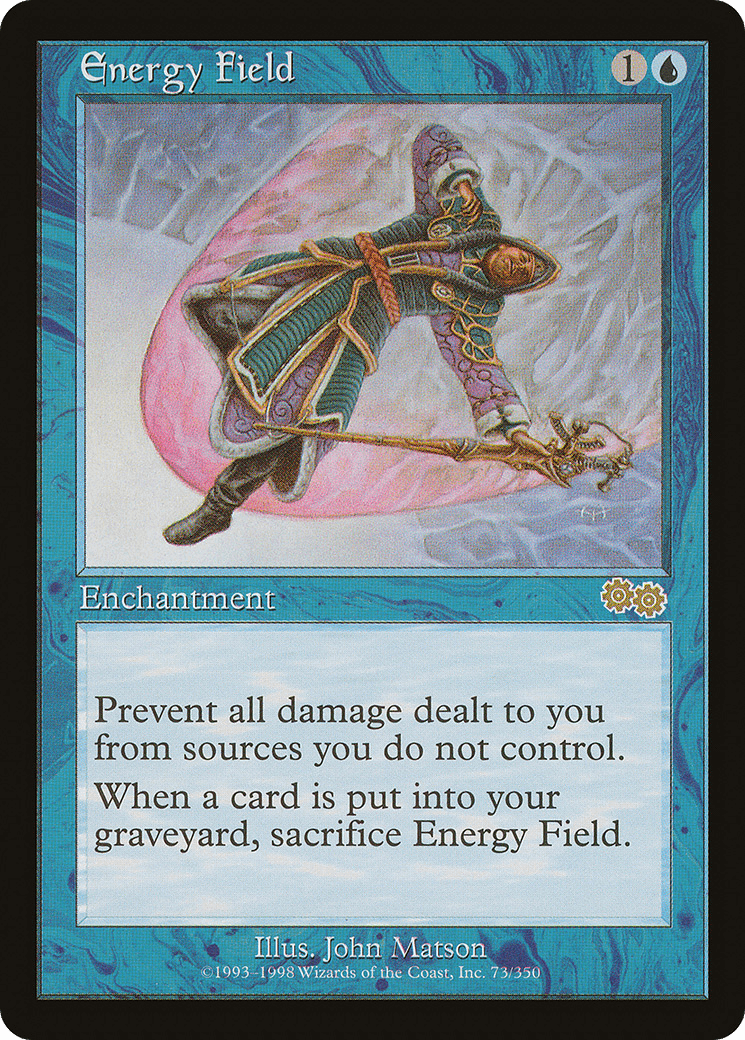
Decklist: https://moxfield.com/decks/MTo_Qh5rqEOe1Y-YALzK2g
Energy Field is one of the more popular variants of Azorius Control shells. These decks seek to assemble Energy Field and Rest in Peace to completely stop all damage from being dealt to the pilot, which stonewalls many of the format’s creature-based decks from being able to win. Rest in Peace has incidental utility in stealing game ones against graveyard-based decks, making Energy Field a fantastic Control variant to bring to a graveyard-based metagame.
Miracles:

Decklist: https://moxfield.com/decks/xYCz6HezjEeYqQpjhyW-8Q
Miracles was a staple of competitive Magic for years, and that legacy lives on in Value Vintage. All of the classic Miracles cards are present, from Entreat the Angels to Terminus. The printing of Brainsurge in Modern Horizons 3 injected further power and redundancy into the deck’s core gameplan, letting it sit comfortably with the other Azorius Control variants in terms of power level and tournament playability. Brainstorm may be restricted, but the strength of the Miracle mechanic surely isn’t.
Standstill:

Decklist: https://moxfield.com/decks/-XTbeWyOOUahT_3dwD5FxA
A newer variant of Azorius Control to pop up, Standstill earned a Top 8 finish at the SCGCon Charlotte 1K in March of this year. After ensuring its survival, the deck seeks to cast and recur its namesake card to keep a fresh flow of cards, while playing under its own Standstill with cards like Timeless Dragon, Shark Typhoon, and Prairie Dog. It is also one of the few decks in the format running Lurrus in its main deck!
Thopter Sword

Decklist: https://moxfield.com/decks/boUZQw8UdkiuPsZrPWCdPg
The classic combo of Thopter Foundry and Sword of the Meek is one of the more proven control decks in Value Vintage. The deck won one of the format’s first-ever 1Ks and has only improved as time has gone on. Foundry and Sword together allow the Thopter Sword pilot to create a 1/1 thopter and gain one life for each mana they invest. Though current iterations do not have a way to make infinite thopters, simply cranking out multiple flying bodies every turn is enough to close the game in short order while also putting the pilot’s life total to a nigh-unassailable range. Though usually Blue-White, Thopter Sword has been built as a Dimir deck to similar success in the past, which is why it has its own spot in this category.
Sailors’ Bane
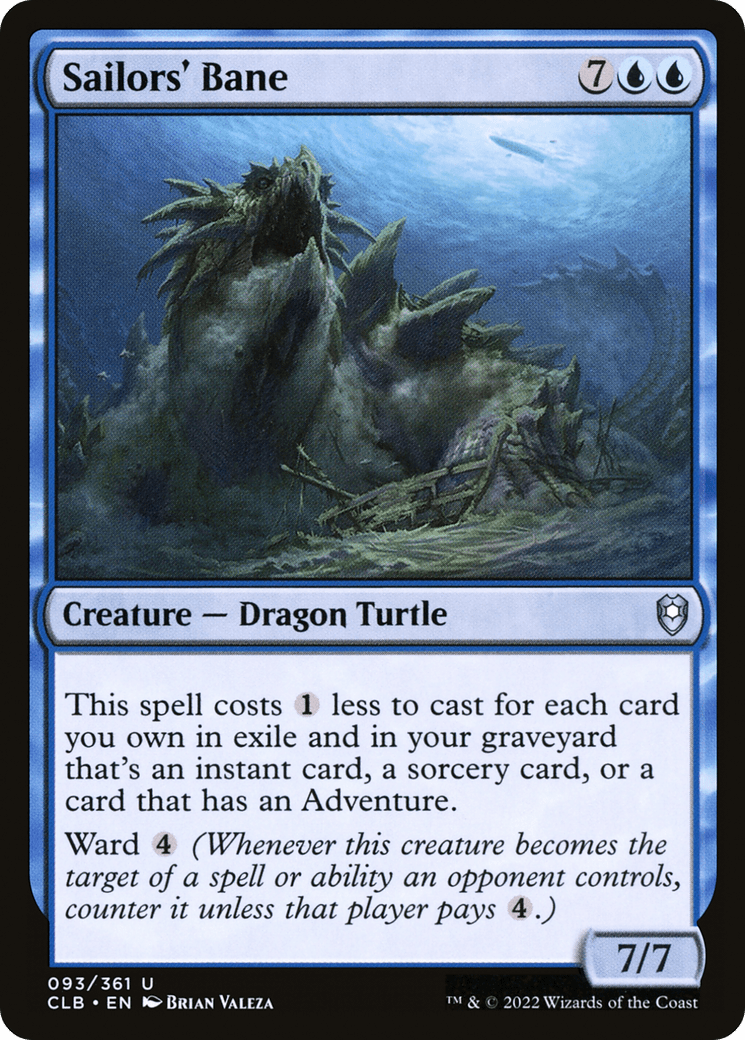
Decklist: https://moxfield.com/decks/EnNhk6Xdt0qpUucrKWPl5w
An interesting intersection of Tempo and Control, Sailor’s Bane more or less fills the role of Murktide Regent in Value Vintage. This spell-centered deck utilizes a bevy of cantrips and removal to disrupt the opponent long enough to establish a tremendous threat, and then shifts into more of a Protect-the-Queen style of gameplay in order to close things out. The reactive nature of the deck allows skilled pilots to navigate their way through any matchup, and gives a fair shot no matter the overall meta composition. Sailor’s Bane is also one of the decks with the highest average density of restricted cards in the whole format!
Bant Wilderness Reclamation
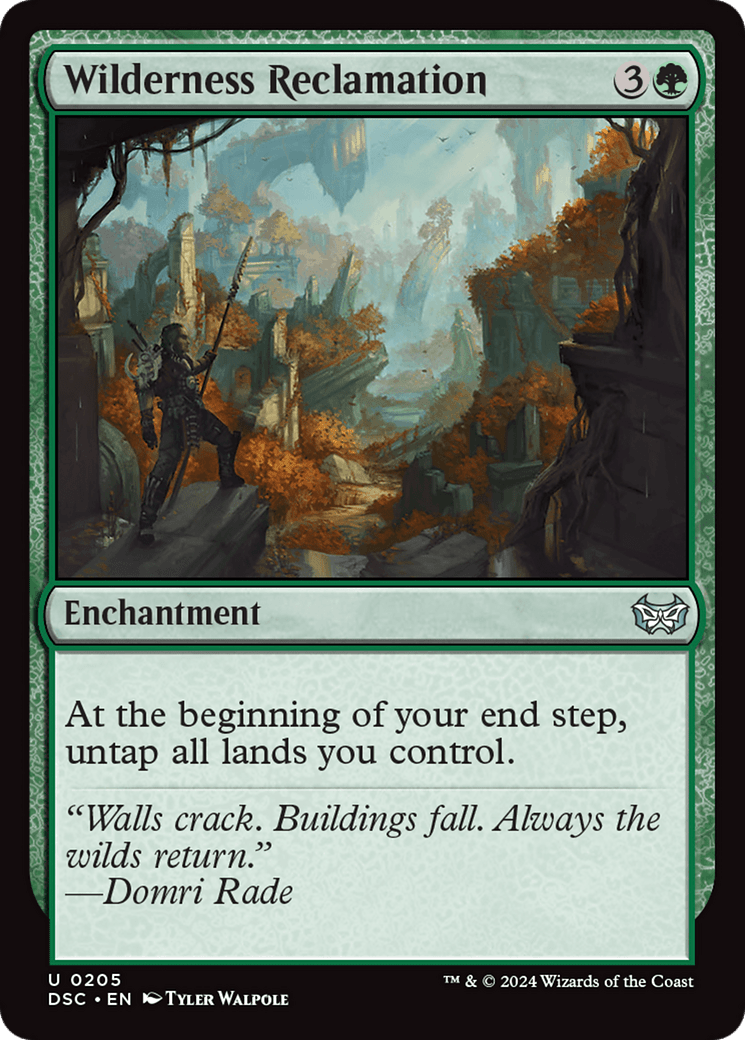
Decklist: https://moxfield.com/decks/Y1Mpu0s9ZkS8cDmK7zyuuQ
Bant Reclamation takes the Azorius Control core and splashes green for its namesake enchantment, Wilderness Reclamation – a powerful mana-doubling (or tripling, or more!) engine. Along with other potent green cards like Planar Genesis, Uro, Titan of Nature’s Wrath, and Blessed Respite, Bant Rec has established itself as one of the premier control decks of the format. Much like its Azorius counterpart, it is endlessly customizable within its core. Players have sleeved up Uro, Shark Typhoon, Dream Trawler, Shorikai, Genesis Engine, or even the classic Entreat the Angels as their finishers, to name but a few.
Cloudpost

Decklist: https://moxfield.com/decks/Q05RQgT8xUqDBNffPnG0nw
Cloudpost recently made the Top 8 of the SCGCon Charlotte 1K, solidifying its place as a deck players need to think about in the larger metagame. Similar to the Domain Overlords deck currently in Standard, Cloudpost wants to stay alive in the early game through Glimmerpost’s lifegain and the destructive power of Oblivion Stone, before closing the game in short order through a large creature or Dark Depths combo. Trenchpost was an enormous addition to the deck from Modern Horizons 3, allowing Cloudpost to have a land-based win condition against control if its primary plan of attacking with creatures is stymied.
Flash

Decklist: https://moxfield.com/decks/7_8D9KohPU6ko9dKaU2LfQ
Unlike the Flash Hulk deck that took Legacy by storm, the Flash deck in Value Vintage is not comboing off at instant speed. It instead uses Flash to cheat a Gruff Triplets or Torsten, Founder of Benalia, into play, benefitting from their powerful death triggers to put a fast clock on the opponent. Flash is very much a combo-control deck. It holds the opponent at bay with counterspells while it assembles its combo, before turning that interaction into a defensive tool to prevent the opponent from stopping its clock. The reprinting of Muddle the Mixture in Ravnica Remastered was a huge boon to the deck, granting it the consistency to find its one-of Flash.
Martyr Proc
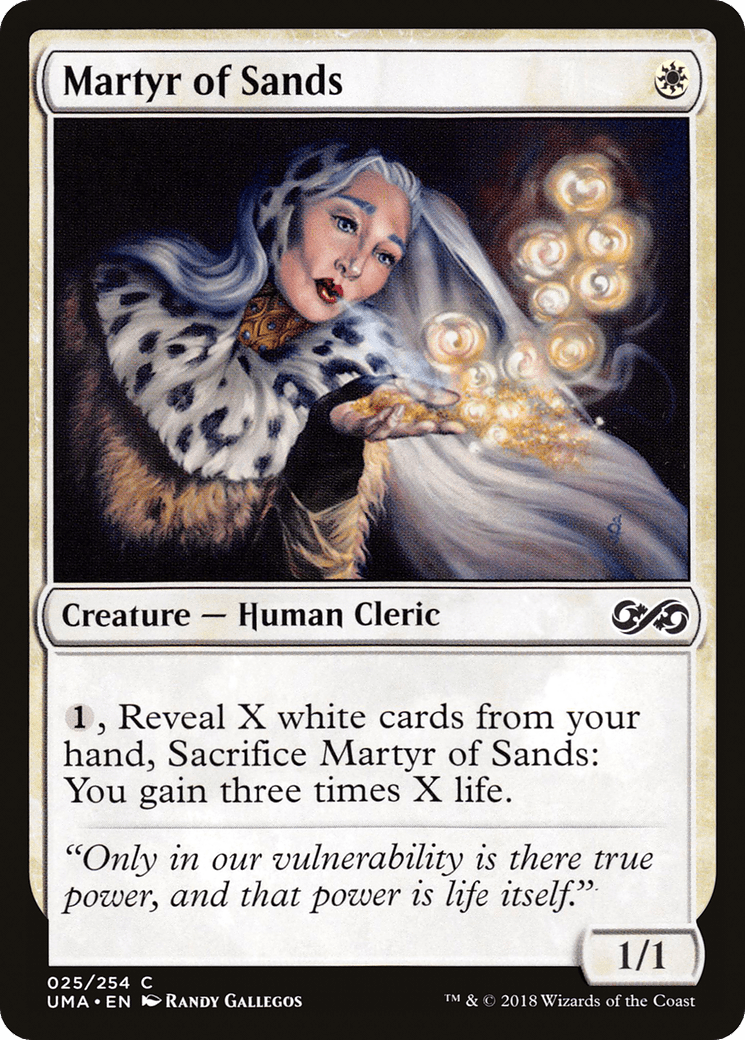
Decklist: https://moxfield.com/decks/_hI_GMR7106StfK3BiX0FA
An old classic from Modern finds a new home in Value Vintage. The strategy of Martyr Proc is totally unchanged from its Modern counterpart: utilize cheap white creatures that sacrifice themselves for lifegain like the namesake Martyr of Sands or Kami of False Hope, while recurring them turn after turn with Abiding Grace. The deck eventually closes with angel tokens from Speaker of the Heavens, a large Champion of the Parish, or Guide of Souls, pumping the deck’s creatures into legitimate threats in the air. Martyr made the finals of the SCGCon Columbus 1K in September 2024, and is an absolute menace against creature-heavy metagames.
Enchantress
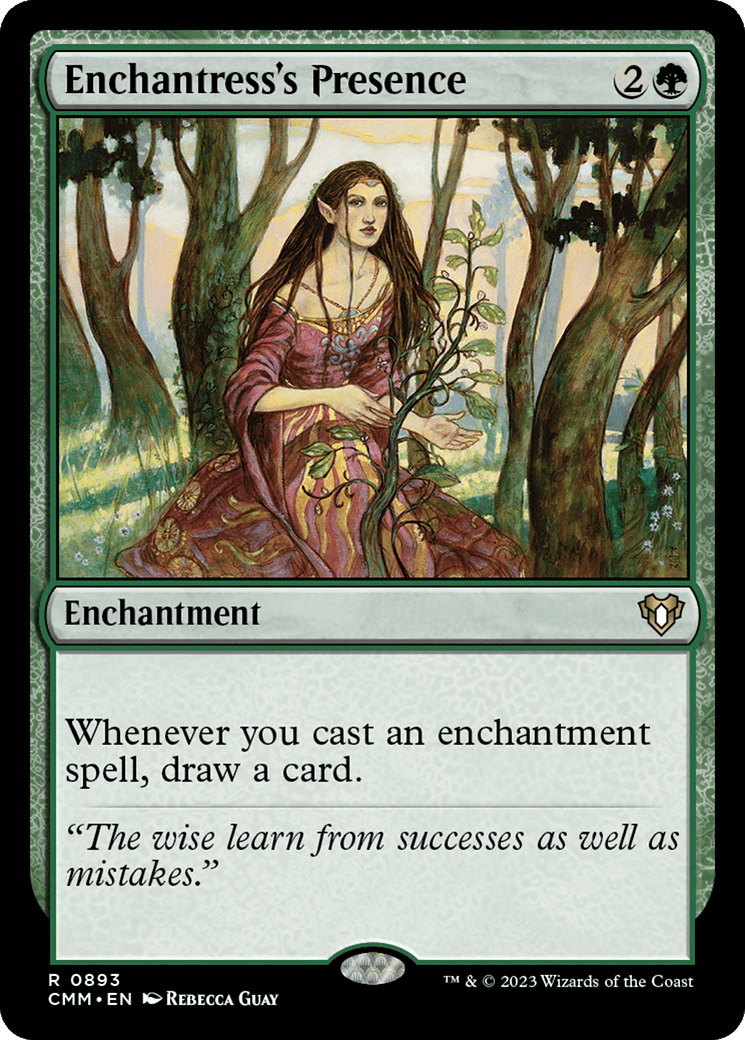
Decklist: https://moxfield.com/decks/BtqBsQIIKUyYnDbHsgFbzQ
A flashback from Legacy’s past, Enchantress is a dedicated Prison deck in Value Vintage; an archetype that is very scarce in the format. Solitary Confinement stonewalls a large chunk of decks in the meta, and in concert with an enchantress effect, it forms an inescapable lock on the game. Modern Horizons sets have given this deck a serious boost, from the reprint of Sterling Grove, to the printing of Sythis, Harvest’s Hand, to Strength of the Harvest providing both a win condition and a land.
Off-Meta Control Decks:
Mindsplice: https://moxfield.com/decks/OJxCKJK3q0CLGKzpPbWXuA
- A highly reactive Dimir toolbox deck that builds around its centerpiece artifact Mindsplice Apparatus to discount the cost of spells, and eventually combo off with Sprout Swarm.
Lantern: https://moxfield.com/decks/eEMN9SrB-0m7tQOvl8B6Uw
- Similar to the Modern deck, an artifact-based prison deck that locks the opponent out of resolving a meaningful spell by controlling the card that they draw.
Bant Snow (Doug Pile): https://moxfield.com/decks/1KLZQHwgT0WoVNChyZv5hQ
- A three to four color Snow deck that uses the innate fixing of Arcum’s Astrolabe to cheat color restrictions on tempo-style threats. Its nickname comes from our primary champion of the deck, Doug, another admin in the official Value Vintage Discord.
Combo
High Tide

Decklist: https://moxfield.com/decks/kyOh0YrjEUCq7lU9mnnxNQ
Far and away, the combo deck that has done the best in tournament settings in the format is High Tide. Much like its counterparts from Extended and Legacy, the deck seeks to find and then cast its namesake spell. The deck then repeatedly untaps its lands through cards like Frantic Search, all while tearing through its library looking for one of several Lutri, the Spellchaser-based infinite combos, or simply generating enough mana that it can cast a Drown in Dreams to mill the opponent out. The deck recently incorporated Cunning Wish into its budget, making it even more powerful and resilient to hate than ever.
Channel Mirror
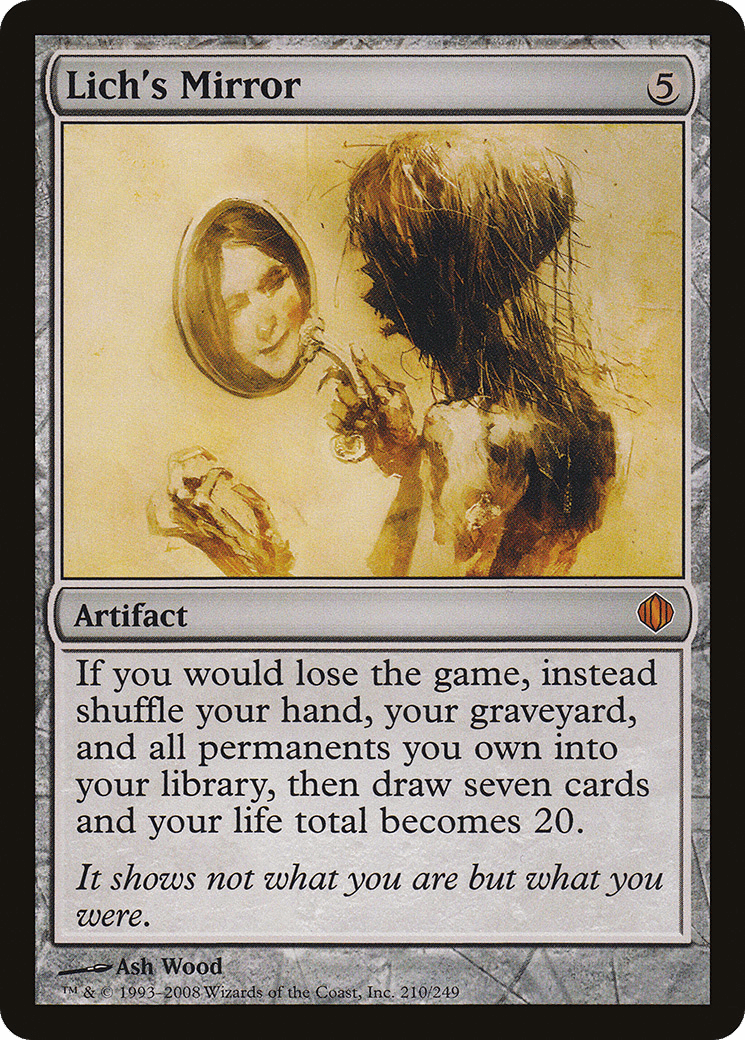
Decklist: https://moxfield.com/decks/TWVUHUHpJ0OjVXdFTDC1rQ
An emergent archetype in the format, Channel Mirror is a Cascade-based combo deck that casts Channel using Violent Outburst and Shardless Agent. From there, the deck repeatedly pays all of its life to float mana via Channel, staying in the game utilizing its signature card, Lich’s Mirror. It continues resetting its life total and drawing cards while netting mana through Channel, until it sinks all of its floating mana into a Boommobile. Using lands that enter tapped but provide two mana, Irrigation Ditch and Sulfur Vents, along with fast mana from Spirit Guides, the deck can execute its combo line as quickly as turn one with a good opening hand!
Nadu

Decklist: https://moxfield.com/decks/Zc5YVyCih0mJIxkdxMZHiw
One of the premier creature combo decks in the format, shells built around Nadu, Winged Wisdom retain much of their former power from their brief dominance of Modern last year. The reprinting of Eldritch Evolution, combined with the relative cheapness of Neoform, let the deck assemble its namesake plus a Nomads En-Kor or Outrider En-Kor with ease. Life/Death brings an extra boost to the deck, letting pilots recur a destroyed Nadu or turn all of their lands into creatures to all but guarantee a combo turn wins the game.
Hypergenesis
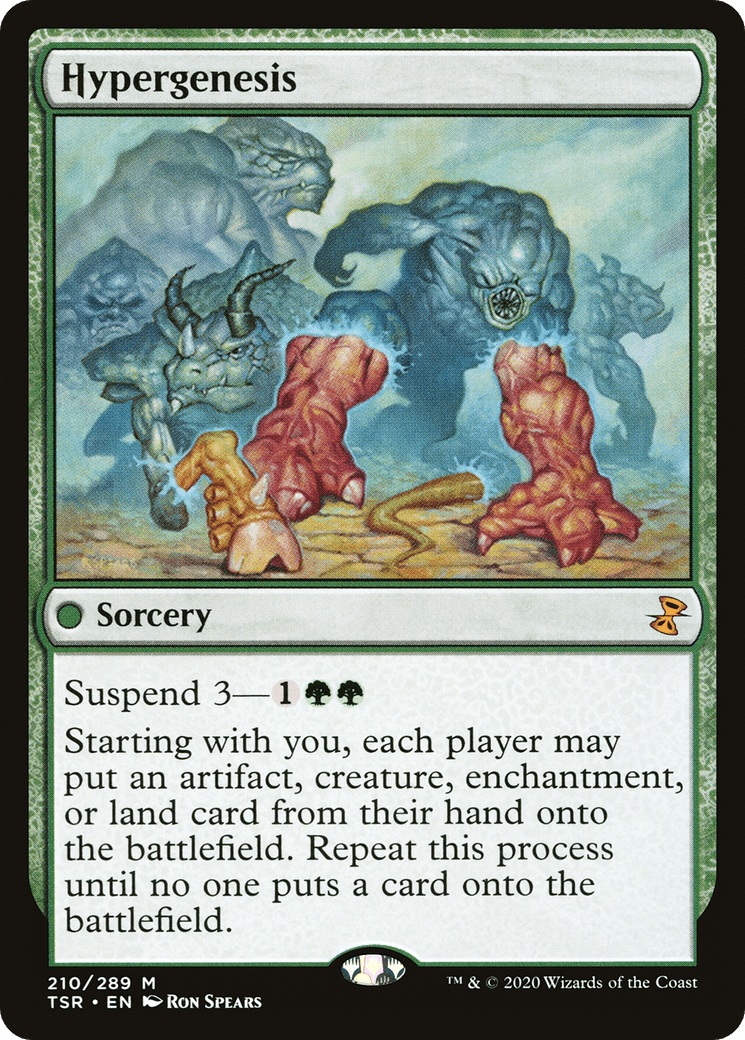
Decklist: https://moxfield.com/decks/gu3GTevgPku7o3VIk6EO5Q
Another deck in the cascade combo family tree, Hypergenesis uses a similar game plan as Channel Mirror; cascade into its namesake card as quickly as possible using Simian and Elvish Spirit Guide. Once Hypergenesis resolves, it then cheats into play massive creatures that either impair the opponent’s ability to deal with the deck’s dominant board state, or deliver an alpha strike with a creature that gives haste to said dominant board.
Cephalid Breakfast
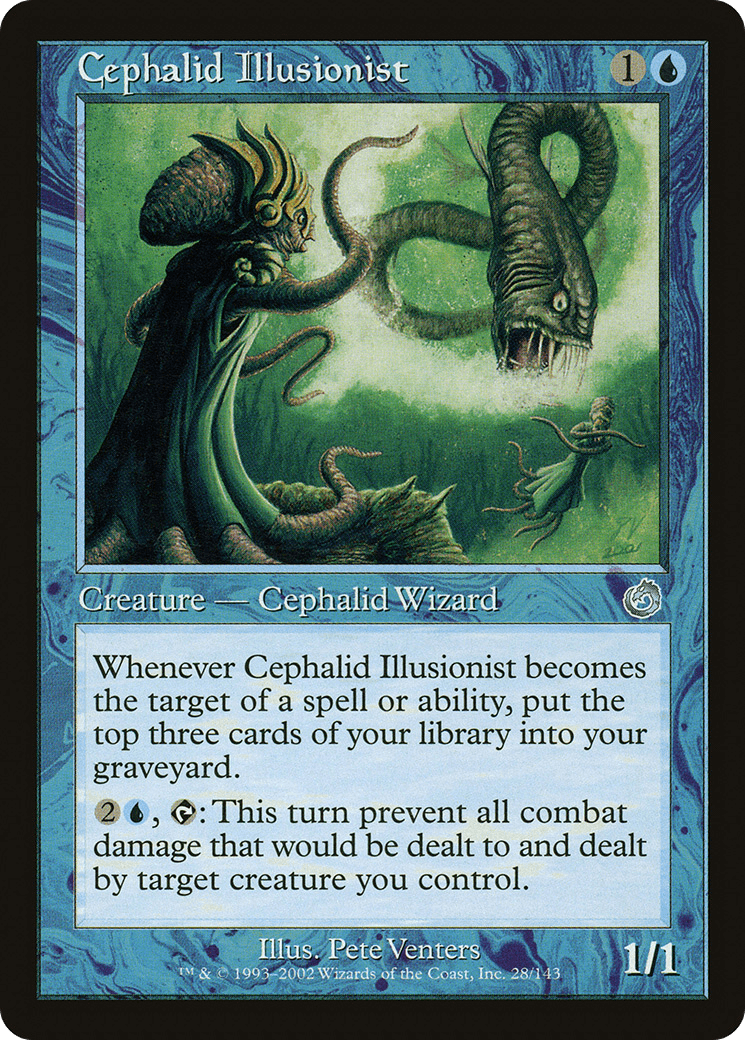
Decklist: https://moxfield.com/decks/dpAbwG4ZBUu5Qq8PQt4Qhw
A staple of older Legacy, Cephalid Breakfast is just as fast and deadly as ever. It retains the classic combo of using Cephalid Illusionist with Nomads En-Kor to mill its entire library, but instead of using Thassas Oracle due to its price, it casts Dread Return to reanimate Angel of Glory’s Rise, which brings back both Laboratory Maniac and Azami, Lady of Scrolls to present a win that is resilient to one piece of removal. Capable of executing its combo on turn two, Breakfast is a force to be reckoned with.
Dredge

Decklist: https://moxfield.com/decks/Mla9SitaGEm_bVaOCiCuOA
Where there’s an eternal format, there’s bound to be Dredge stirring up trouble. Dredge carries much of its power from its Bazaar-tapping Vintage configuration, filling the graveyard and repeatedly generating a massive board if not disrupted. The deck can be difficult to stop, and can even play through some of the most common grave hate in Soul-Guide Lantern or Ravenous Trap.
Creative Technique Combo (Mississippi River)

Decklist: https://moxfield.com/decks/r7p4-DP470Gmxx3pNVymCQ
The big brother of Pioneer Quintorius Combo, Creative Technique is a deck built to do one thing: cascade into its signature card, cast its entire deck, and win. Just like the Legacy build of the deck, it is designed in such a way that resolving any spell with Cascade wins the game, due to the only spell in the entire deck that costs less than the cascaders being the Technique.
Oops All Spells
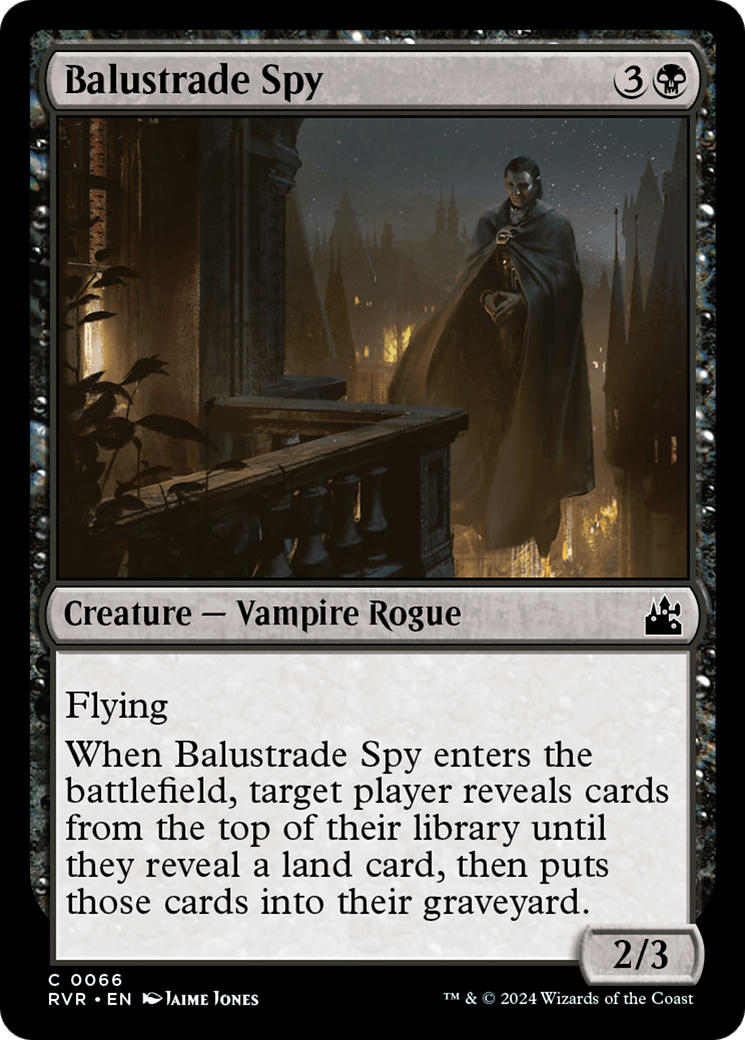
Decklist: https://moxfield.com/decks/2sNNe2788UGAH2FpXHlaOA
Oops All Spells carries much of its game plan, speed, and power from Legacy builds of the deck. Make four mana, cast a Balustrade Spy or Undercity Informer, mill the deck, then Dread Return back Lotleth Giant to burn the opponent out. The builds of Oops in Value Vintage frequently have the sideboard pivot of Goblin Charbelcher to dodge graveyard hate.
Off Meta Combo Decks:
Goblins: https://moxfield.com/decks/dalWgOSr10W8Kj-WDQXByA
- A Doomsday-style deck that combines an aggressive pivot plan with a Goblin Recruiter combo fueled by Muxus, Goblin Grandee
Meria Paradoxical Outcome: https://moxfield.com/decks/ulL_Y8vK7U6JKD82JgDxhg
- Artifact Storm-based on the Vintage Paradoxical Outcome deck that uses cheap cantripping artifacts and cost reducers to shred through its library.
Living End: https://moxfield.com/decks/Axe-eG3kqE-nq92nrrTIzw
- A graveyard-based midrange combo deck that cascades into Living End to reanimate a board full of big creatures while removing all of the opponent’s creatures in the process.
Remember, the next 1k event is right around the corner, so get signed up if you aren’t already! We are all extremely excited to be hosting this tournament and hope to see some fresh faces in the ranks. If you’re interested at all in learning more about the format, brewing, or just chatting with some cool people, feel free to join our Discord! It’s a wonderful bunch, and I would be happy to brew with you. Myself and the rest of the team over there love the opportunity to chat and answer questions, so don’t be afraid to peek in and see what else this format might have in store for you!
